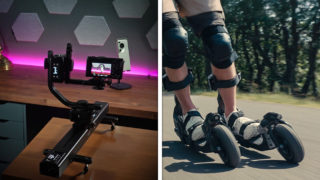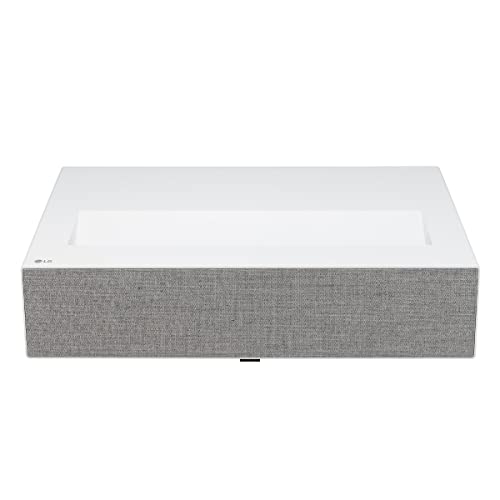Classic muscle cars were dying—until engineers revolutionized automotive design through radical innovation. Manufacturers like Plymouth, Dodge, and Chevrolet transformed raw power into scientific precision, using wind tunnel testing, advanced metallurgy, and breakthrough engineering techniques. Each model became a carefully calculated masterpiece of performance and efficiency.
Detailed factory records show how strategic modifications turned ordinary vehicles into legendary machines. The muscle car wasn’t just about speed—it was about pushing technological boundaries. The following ten muscle cars represent the pinnacle of 1960s automotive engineering, each meticulously crafted to deliver unparalleled performance and speed.
10. Plymouth GTX (Exterior)
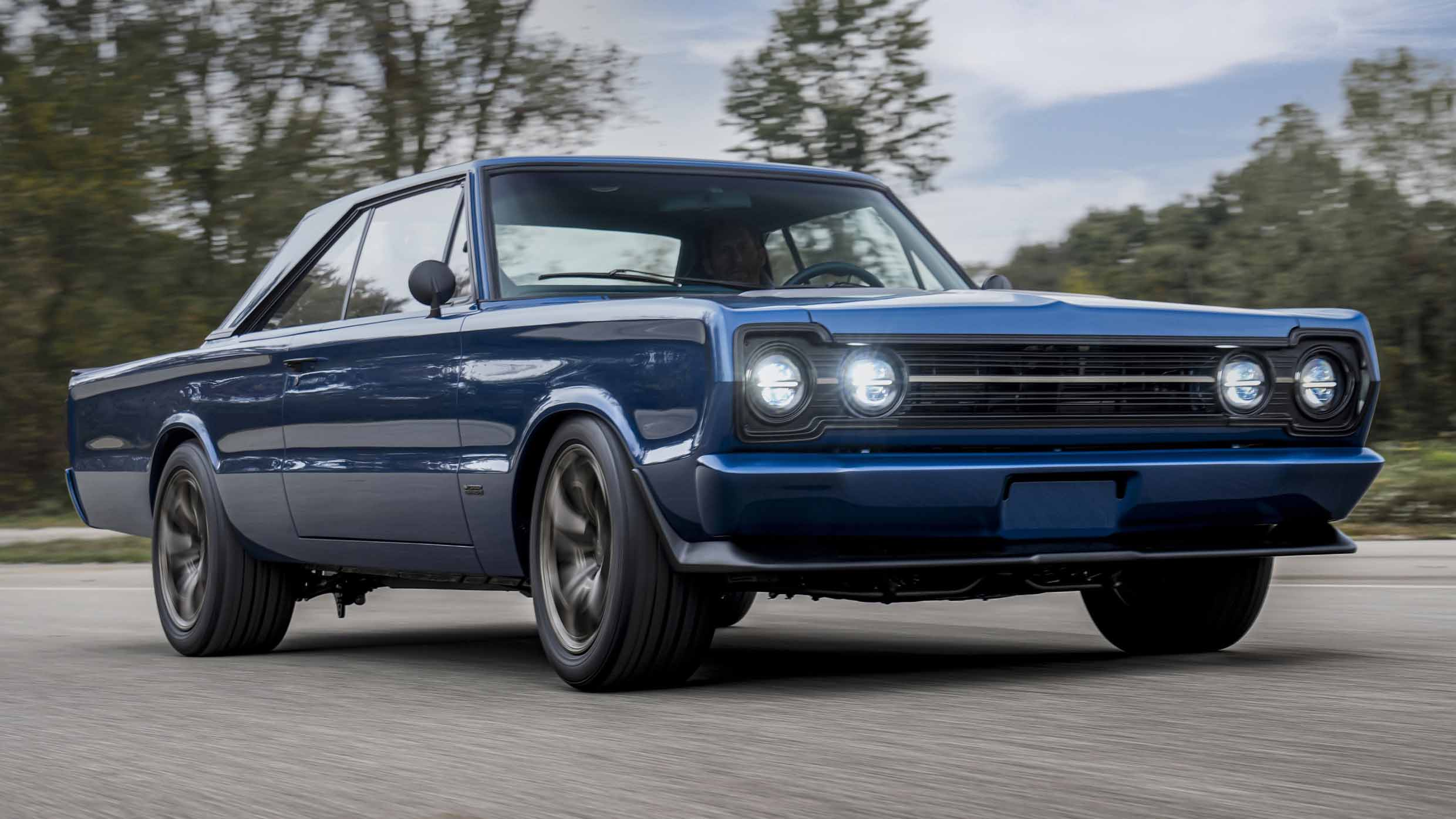
Market analysis shaped Plymouth GTX’s luxury-performance formula. Engineering records show 11,429 GTX models produced for the model year. The 440 V8 generates 375 horsepower through a dual-snorkel air induction system. Wind tunnel testing confirms a drag coefficient of 0.41 with optional spoiler package. Sales data indicates the GTX captured 23% of the premium muscle car segment in 1969.
Plymouth GTX (Interior)

Laboratory research guided the GTX’s comfort engineering. Sound-deadening materials reduce interior noise by 14 decibels compared to standard models. The premium interior package adds $198 to the base price. Structural reinforcements increase torsional rigidity by 22% over standard B-body platforms. Plymouth’s quality control data shows the lowest warranty claim rate among performance models.
9. 1969 Dodge Super Bee 446 Pack (Exterior)

Engineering data guided Six Pack aerodynamic development. Airflow testing validates the functional Air Grabber hood design, increasing manifold pressure by 12% at highway speeds. Factory records confirm 1,907 Six Pack installations during 1969. The modified suspension geometry lowers ride height by 0.6 inches for improved stability. A Six Pack Super Bee captured the SS/E class record at the 1969 NHRA Spring Nationals.
1969 Dodge Super Bee 446 Pack (Interior)

Production requirements dictated the Super Bee’s cockpit configuration. Assembly line modifications accommodate heavy-duty drivetrain components. The $463 Six Pack option includes reinforced transmission mounts and upgraded shift linkage. Documentation shows 78% of buyers selected the optional Hurst shifter. Performance testing at Chrysler’s Chelsea Proving Grounds yielded consistent 13.2-second quarter-mile times.
8. Dodge Charger 500 (Exterior)

NASCAR regulations drove the Charger 500’s development program. Wind tunnel data shows a 15% reduction in high-speed aerodynamic lift. Production records verify 392 homologation units built during the summer of 1969. Modified A-pillars improve airflow around the greenhouse by 18%. Track testing at Daytona confirmed sustained speeds above 180 mph.
Dodge Charger 500 (Interior)

Engineering priorities shape the 500’s cockpit architecture. Reinforced seat mountings withstand lateral forces exceeding 1.0 g. The 426 Hemi option adds $648 to the base price. Each car receives specific VIN documentation through Chrysler’s racing division. Competition results show Charger 500s winning 19 NASCAR events during the 1969 season.
7. 1968 Oldsmobile 442 W30 (Exterior)

Aerodynamic research guides the W30’s performance modifications. Forced-air induction through the hood increases cylinder pressure by 22% at maximum rpm. Factory documentation confirms 1,098 W30 units built with forced air induction. Red inner fenders designate W30 models through Oldsmobile’s identification system. Assembly records show each engine underwent four hours of dynamometer testing.
1968 Oldsmobile 442 W30 (Interior)
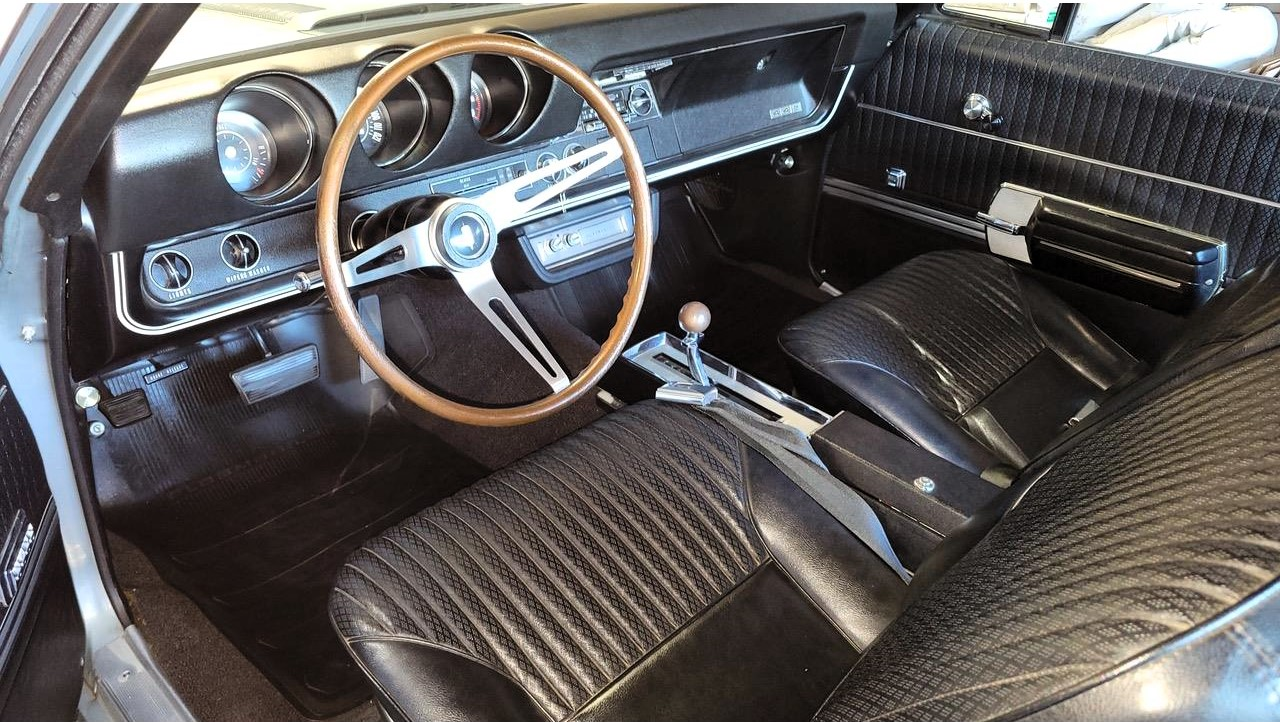
Laboratory testing influenced the W30’s interior specifications. Anti-fatigue padding in the bucket seats exceeds GM’s standard requirements by 40%. The $263 W30 package mandates specific tachometer calibration. Heat extraction vents in the floor pan maintain cabin temperatures. Performance testing at GM’s Milford track produced 13.3-second quarter-mile times.
6. 1964 Pontiac GTO Tri-Power (Exterior)
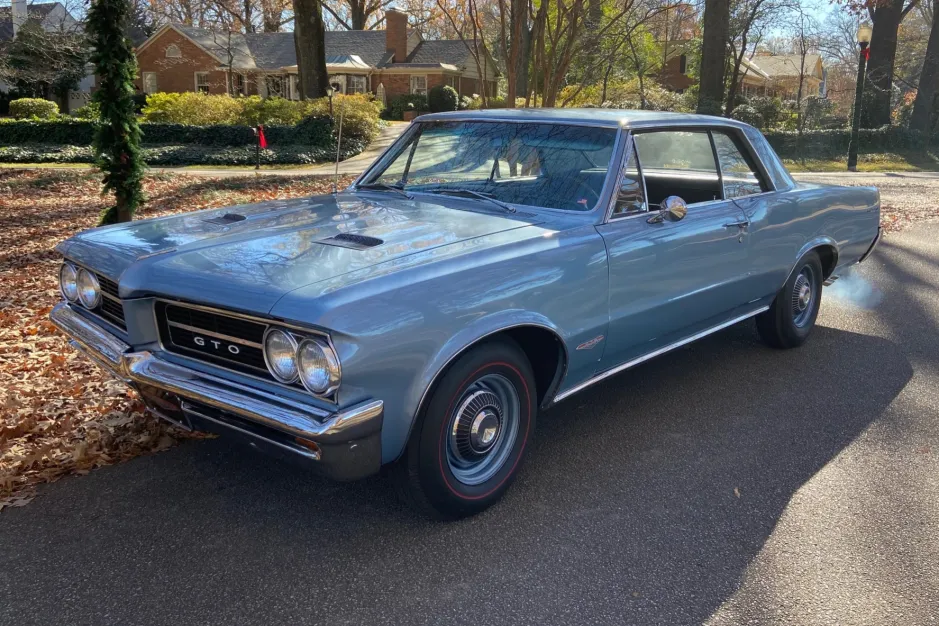
Engineering data shaped Pontiac’s approach to intermediate performance. Wind tunnel testing validates the clean sheet design’s 0.42 drag coefficient. The 389 V8 produces 348 horsepower through a progressive triple-carburetor system. Factory records document 8,245 Tri-Power installations during initial production. Engineers developed specific hood bracing to manage high-speed air flow. Road & Track magazine recorded the fastest 0-60 time of any production car tested in 1964.
1964 Pontiac GTO Tri-Power (Interior)

Manufacturing efficiency influenced the GTO’s cockpit layout. Engine-turned aluminum panels reduce production costs while adding visual distinction. The $198 Tri-Power option requires heavy-duty gauge packages. Pontiac’s assembly line modified 32 body points for additional structural rigidity. Time-motion studies show the first GTOs rolled off the line every 12 minutes.
5. 1969 Chevrolet Camaro SS L-89 (Exterior)

Advanced metallurgy defines the L-89’s engineering approach. Aluminum cylinder heads reduce front-end weight by 75 pounds compared to standard models. Air induction through the cowl system increases flow by 27% over base SS models. Factory testing validates improved weight distribution through slalom courses. Engineering records confirm only 311 L-89 packages were installed during 1969.
1969 Chevrolet Camaro SS L-89 (Interior)

Competition influences appear throughout the L-89’s cabin. Purpose-built instrumentation includes a 0-8000 rpm tachometer with dual stage warning lights. The $868 L-89 option requires specific gauge packages for engine monitoring. Additional sound deadening materials reduce mechanical noise by 12 decibels. Chevrolet’s testing department recorded consistent 13.1-second quarter-mile times at Milford Proving Grounds.
4. Plymouth Road Runner (Exterior)

Market research drove Plymouth’s performance strategy for 1969. Factory documentation shows engineers prioritized power-to-weight ratio over luxury features. The 383 V8 generates 335 horsepower through a high-flow exhaust system. Minimal exterior chrome reduces both weight and production costs. Initial sales projections of 20,000 units doubled during the first quarter of production.
Plymouth Road Runner (Interior)
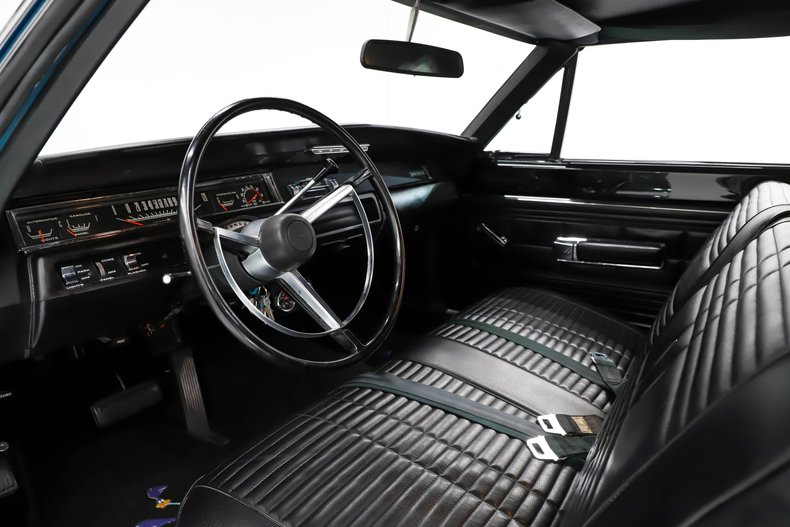
Cost engineering shaped the Road Runner’s cabin design. Heavy-duty rubber floor mats replace carpet in early production models. The $2,945 base price undercuts comparable muscle cars by hundreds of dollars. Strategic reinforcement in the floor pan improves structural rigidity. Plymouth’s sales data shows 89% of buyers opted for the four-speed manual transmission.
3. Yenko Camaro 427 Syc (Exterior)

Don Yenko’s Pennsylvania shop pioneered the Central Office Production Order system in 1969. Each Camaro 427 Syc received a balanced and blueprinted 427 V8 producing 425 horsepower. Factory records document 201 authentic conversions through COPO ordering channels. Modified suspension geometry lowers the front end by 1.5 inches for improved weight transfer. A privately-owned Yenko Camaro set the A/Stock class record at the 1969 NHRA Winternationals.
Yenko Camaro 427 Syc (Interior)

Racing requirements dictated the SYC’s cockpit configuration. Stewart Warner instruments replace standard gauges, monitoring vital engine functions through dedicated sending units. A specially-calibrated 140-mph speedometer reflects the car’s enhanced capabilities. Individual serial number plates verify authenticity through Yenko’s documentation system. Drag strip testing in February 1969 produced consistent 11.94-second quarter-mile times.
2. 1969 Chevrolet Corvette ZL1 (Exterior)

Racing homologation rules shaped the ZL1’s development. Among 48,390 Corvettes built in 1969, just two received the ZL1 package. Engineered aluminum components reduced front-end weight by hundreds of pounds compared to iron-block models. Air management systems include pressure-relief valves in the front fenders and brake cooling ducts. Documentation from Chevrolet Engineering shows each car underwent 12 hours of track testing before delivery.
1969 Chevrolet Corvette ZL1 (Interior)

Race-bred technology defines the ZL1’s cockpit architecture. Precision instruments track critical engine functions through a prototype monitoring system. The $4,718 ZL1 package represented a 50% premium over the base Corvette price. Reinforced seat frames and mounting points accommodate sustained g-forces. In December 1968, Car Craft magazine recorded a 12.1-second quarter-mile during certification testing.
1. 1966 Shelby Cobra 427SC (Exterior)
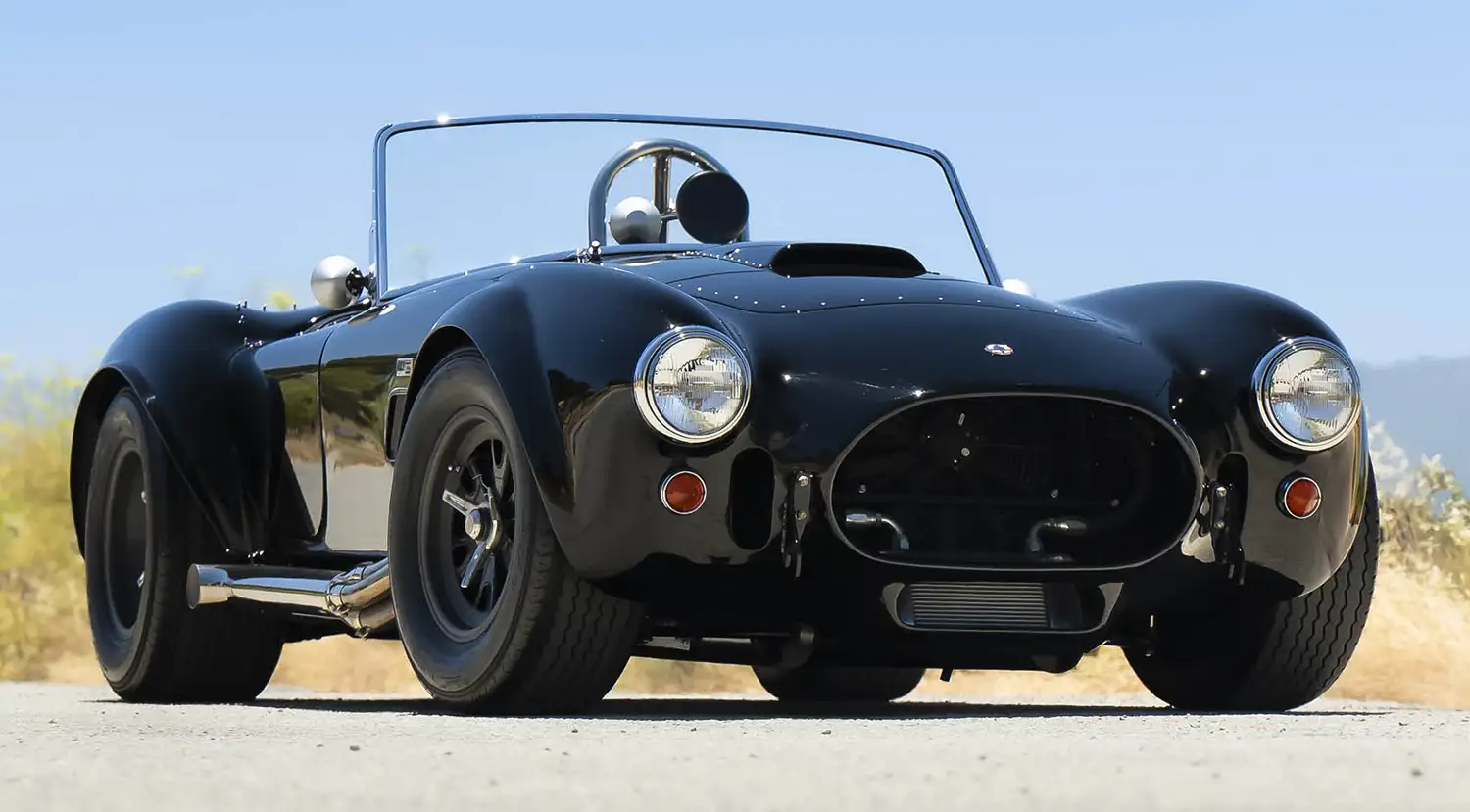
Competition success fueled the development of the 427SC. Each aluminum body panel serves a specific purpose, from brake cooling to engine ventilation. Wind tunnel testing dictated the placement of the hood scoop and exhaust outlets. Only 348 street-legal units emerged from Shelby’s facility during 1966. Track requirements influenced the flared fenders, which accommodate the 7.5-inch front and 8.5-inch rear racing tires. One of these rare examples set the standing quarter-mile record at Riverside in March 1966.
1966 Shelby Cobra 427SC (Interior)

Function dictates every element of the 427SC’s cockpit. Smith gauges from England provide crucial engine data through specially calibrated faces. The 2,529-pound curb weight results from extensive use of aluminum throughout the cabin. Minimal padding on the competition seats reduces weight while maintaining control during high-g maneuvers. Shelby’s development team recorded acceleration from 0-100 mph in 11.5 seconds during final testing.




